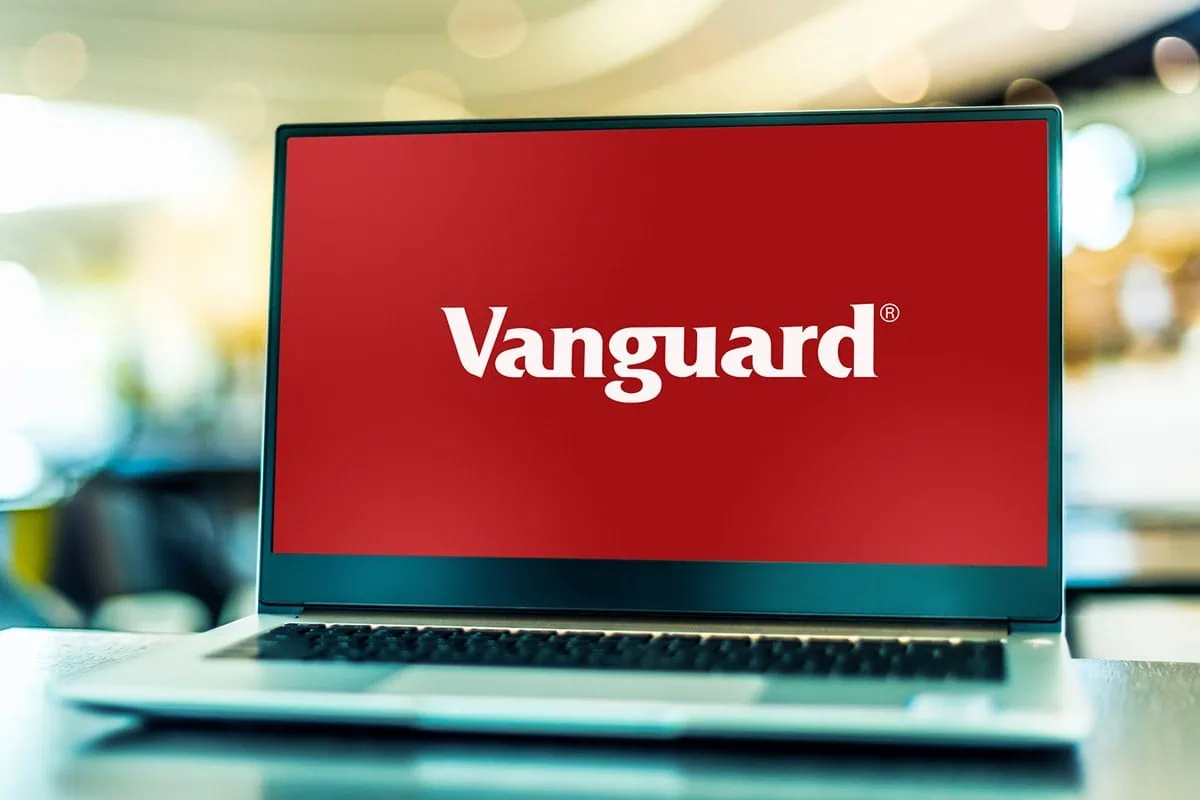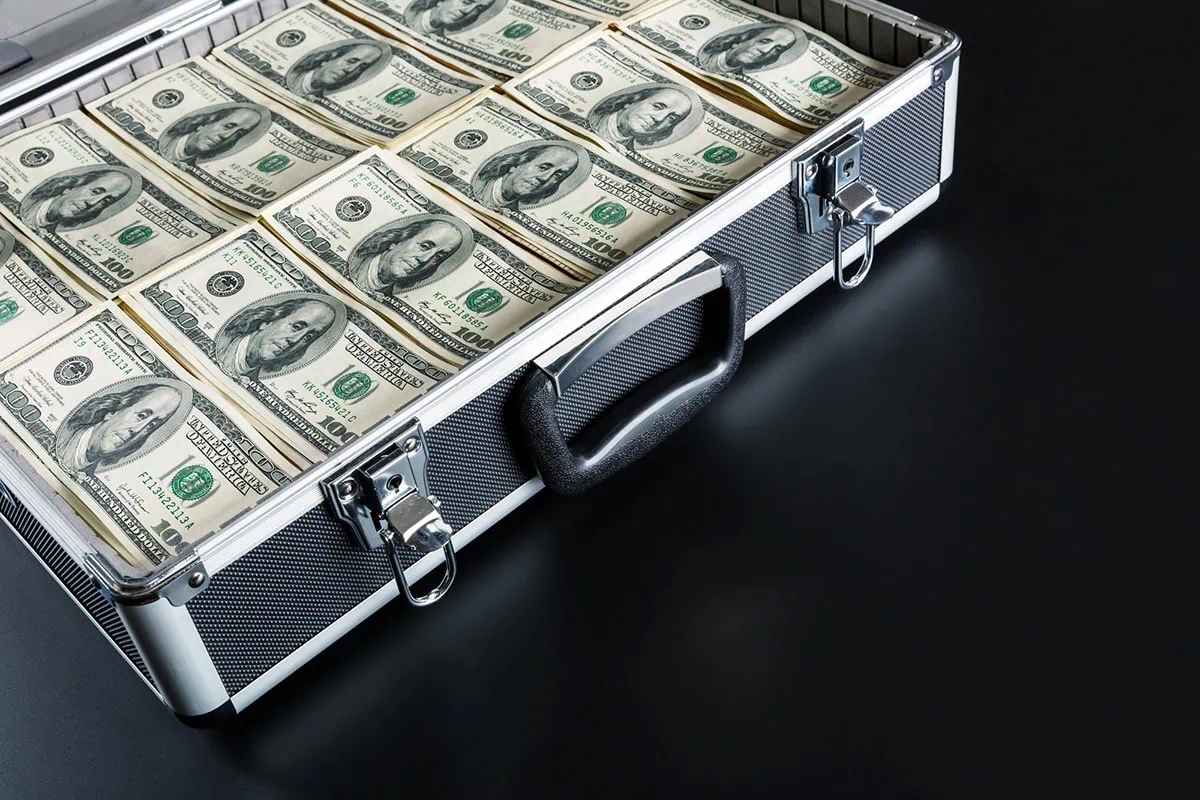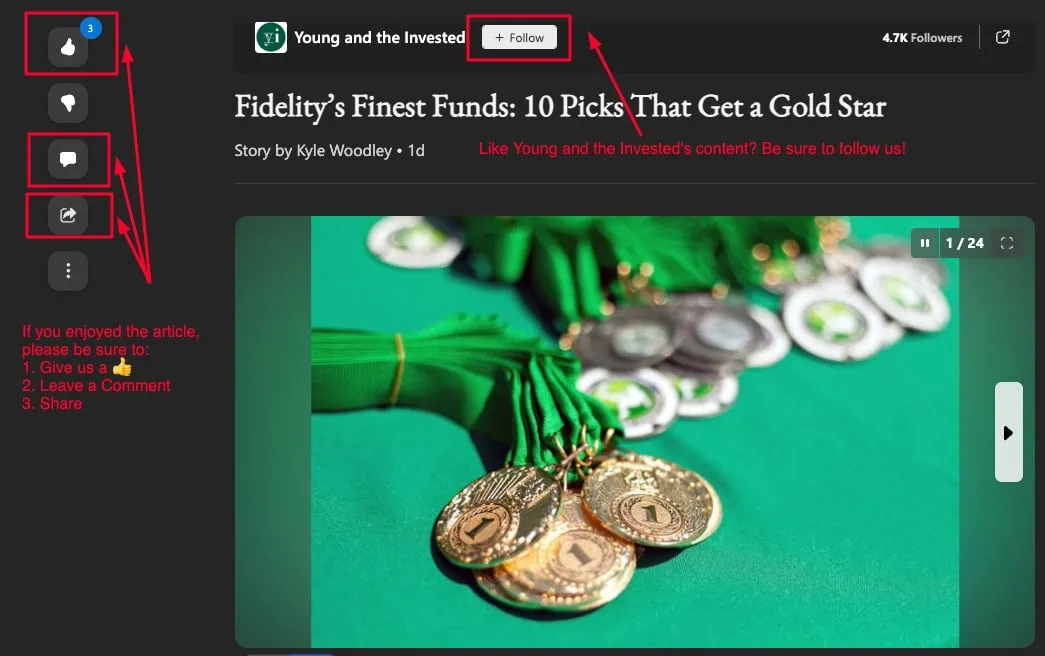Dividend mutual funds provide investors with two sources of return (price appreciation potential and income) and instant diversification with the purchase of a single ticker.
The best dividend mutual funds, at least in our view, do all that in a better manner than their peers while also charging cost-effective fees.
Dividend stocks are a portfolio staple, delivering not just the growth potential investors expect out of equity investments, but also income in the form of regular cash dividends. In good times, that income helps pad your upside; in bad times, it can help offset downside. Either way, dividends are a powerful contributor to portfolio returns, accounting for (depending on what study you’re reading) anywhere between 25% and 40% of the S&P 500’s historical returns.
But if you don’t have the time nor the inclination to research and manage a portfolio of dividend stocks … well, you’re hardly alone. That—and the implicit admission that professional portfolio managers and well-built indexes can do it better—is why trillions of dollars are invested in dividend mutual funds.
Today, I want to introduce you to some of the best dividend funds you can buy. This list has been compiled with many needs in mind—each investor has their own goals, risk tolerance, and time horizon—so I’m examining a variety of mutual fund strategies to ensure that most people reading this can find something that’s appropriate for their unique needs.
Disclaimer: This article does not constitute individualized investment advice. These securities appear for your consideration and not as personalized investment recommendations. Act at your own discretion.
Editor’s Note: Tabular data is up-to-date as of Sept. 26, 2025.
Table of Contents
Why Invest in Dividend Stocks Via Mutual Funds?

The market is littered with individual dividend stocks, but they’re not exactly created equally.
Some pay a good, sustainable yield and even grow their payouts over time. But some only pay nominal dividends of just a penny or two per share with no prospect of improving anytime soon. And some offer payouts that, while high, are unsustainable and could be cut or outright suspended in the future.
Here’s why mutual funds are a good alternative to individual dividend stocks:
Mutual funds relieve you of the work of identifying these stocks—mutual funds invest based on either the research of skilled managers, or the rules of an index that demand certain criteria be met. Better still, mutual funds spread your money around dozens or even hundreds of stocks, rather than force you to rely on one company’s specific strengths and weaknesses.
And you get this diversification for a relative song: Rather than needing to spend the tens of thousands of dollars it would take to invest in all those individual stocks, you only have to meet a minimum investment—sometimes a few thousand, but sometimes a few hundred, and sometimes as little as $1. You’ll pay an ongoing expense (taken directly out of the fund’s performance), of course—but many funds charge reasonable fees while providing you with performance you couldn’t get on your own.
How Were the Best Dividend Funds Selected?

I wanted to cast a wide net while ensuring that the final list includes funds that are both established and recognized for their strategies.
I started my search with a quality screen, including only mutual funds that have earned a Morningstar Medalist Rating of Gold, Silver or Bronze. Morningstar has two ratings systems—the Star ratings and the Medalist ratings. I prefer screening for the latter, as they’re a forward-looking analytical view of the fund rather than just a backward look at performance. Per Morningstar:
“For actively managed funds, the top three ratings of Gold, Silver, and Bronze all indicate that our analysts expect the rated investment vehicle to produce positive alpha relative to its Morningstar Category index over the long term, meaning a period of at least five years. For passive strategies, the same ratings indicate that we expect the fund to deliver alpha relative to its Morningstar Category index that is above the lesser of the category median or zero over the long term.”
Note: A Medalist rating doesn’t mean Morningstar is necessarily bullish on the underlying asset class or categorization. It’s merely an expression of confidence in the fund compared to its peers.
To narrow the list further, I also required the following:
–Minimum trailing 12-month yield of 2%: Mutual fund yields are calculated by adding up the prior 12 months’ worth of dividends and dividing by share price. The S&P 500, for instance, yields 1.2% currently. This list is built for people who are prioritizing a substantially higher dividend yield than what the market provides, so all funds included here must pay at least 2%, though several pay above 3% and even 4%. (This does eliminate a certain variety of dividend fund, which I’ll talk about after the picks.)
–Low fees: Expenses must be considered either “Below Average” or “Low” (so, the two least expensive quintiles) for the fund’s Morningstar category.
–No loads: I excluded funds that charge additional fees, such as sales “loads.” For instance, if you invested $10,000 in a mutual fund with a 5% front-end load, the mutual fund provider would immediately take $500 out in fees—meaning you’d already be starting from behind, investing just $9,500 (and not $10,000) at the outset.
–Reasonable investment minimums. The maximum investment minimum for inclusion is $5,000, but no fund on this list requires that much. Currently, the highest minimum is $3,000, while a few funds have no minimum whatsoever—you can invest for as little as $1. Note: Some fund providers explicitly lay out lower investment minimums for specific accounts, such as individual retirement accounts (IRAs).
–Broad availability: Many mutual funds have several share classes, many of which are limited to certain types of accounts, like, say, only for 401(k)s or only for wealth management clients. All funds here are Investor-class or other shares that are generally considered to be widely available to retail investors.
From the resulting list of dividend mutual funds, I hand-picked a group of products that represent numerous strategies: broader catch-all dividend portfolios, sector funds, international dividend plays, and more.
What to Know Before Buying These (Or Other) Funds

My hope here is simple: I want you to be able to find at least one dividend fund (if not more) that fits within your own set of investing needs.
If you do decide to continue your research and eventually invest in one of these (or any!) funds, please keep the following in mind:
–All of these funds have no loads, but brokerage commission fees might apply; check your brokerage before purchasing.
–Your brokerage might require a larger minimum initial investment for mutual funds than the fund itself requires.
–Some brokerage accounts might not let you purchase certain funds, even if they’re generally available to retail investors. (For instance, you might be able to buy the completely made-up Woodley Investments Large-Cap Fund at Schwab, but not at Fidelity.)
Lastly, I am not ranking these funds—every pick on here rates as excellent already. I’m instead listing them in a natural progression of various portfolio needs, starting broadly with different stock flavors and ending with a few bond funds.
With all that out of the way, let’s look at the best dividend funds you can buy.
Related: The 13 Best Mutual Funds You Can Buy
Best Dividend Fund #1: Vanguard High Dividend Yield Index Fund Admiral Shares

–Style: U.S. high-yield dividend stock
–Management: Index
–Assets under management: $79.5 billion
–Dividend yield: 2.5%
–Expense ratio: 0.08%, or 80¢ per year for every $1,000 invested
–Minimum initial investment: $3,000
I’ll start with one of the most straightforward and broadest dividend funds: the Vanguard High Dividend Yield Index Fund Admiral Shares (VHYAX).
The Gold-rated VHYAX tracks the FTSE High Dividend Yield Index, which starts with a wide universe of large-, mid-, and small-cap stocks, then eliminates the bottom half of stocks by expected 12-month yield. The remaining dividend stocks are then “weighted” by size, which means the larger their market cap, the more assets are invested in that stock.
The result is a portfolio of 580 stocks that leans heavily toward big, blue-chip companies. Large-cap stocks account for 70% of assets, followed by mid-caps at 25% and smalls at 5%. Top holdings include mega-cap companies such as JPMorgan Chase (JPM) and Exxon Mobil (XOM) that pay higher-than-average yields.
Vanguard High Dividend Yield Index Fund also provides decent diversification across sectors. It’s heavily weighted in financial companies at more than 20% of assets, but four other sectors—industrials, technology, consumer staples, and health care—also enjoy double-digit allocations.
Related: The 9 Best Dividend ETFs [Get Income + Diversity]
One group of stocks you won’t see, however, are real estate investment trusts (REITs). Why? Most stocks pay “qualified” dividends, which are taxed at more favorable long-term capital gains tax rates (0%, 15%, or 20%). However, REITs generally pay non-qualified dividends, which are treated like ordinary income and subject to marginal tax rates.
Still, VHYAX delivers exposure to hundreds of mostly big, stable companies that pay out relatively generous dividends. That makes it one of the best dividend funds to buy if you’re just trying to improve your level of portfolio income without adding too much concentration in any one corner of the market.
Note: Many Vanguard mutual funds are also available as exchange-traded funds (ETFs). That includes Vanguard High Dividend Yield Index Fund, which also trades as the Vanguard High Dividend Yield ETF (VYM) and charges 0.06% in annual expenses.
Want to learn more about VHYAX? Check out the Vanguard provider site.
Related: 15 Best Investing Research & Stock Analysis Websites
Do you want to get serious about saving and planning for retirement? Sign up for Retire With Riley, Young and the Invested’s free retirement planning newsletter.
Best Dividend Fund #2: Vanguard Equity-Income Fund Investor Shares

–Style: U.S. high-yield dividend stock
–Management: Active
–Assets under management: $61.6 billion*
–Dividend yield: 2.3%
–Expense ratio: 0.27%, or $2.70 per year for every $1,000 invested
–Minimum initial investment: $3,000
Lovers of Vanguard funds who would prefer an actively managed option might consider the Vanguard Equity Income Fund Investor Shares (VEIPX).
Co-managers Matthew Hand and Sharon Hill are also tasked with delivering above-average income. Their 200-stock portfolio has a smaller “cap” mix (55% large, 40% mid, 5% small) than the index fund, but it’s still loaded with large-cap dividend stocks including JPMorgan Chase, Bank of America (BAC), and Johnson & Johnson (JNJ). The sector blend is somewhat similar, too—financials account for more than 20% of assets, while industrials, technology, consumer staples, and health care all enjoy double-digit weights.
VEIPX isn’t operated by a strict methodology like VHYAX is. Hand and Hill split stock-picking duties, and do so in contrasting ways. Hand uses traditional qualitative analysis to pick about 60 to 70 dividend stocks, while Hill applies a more quantitative approach for the remaining holdings.
Related: 13 Best Long-Term Stocks to Buy and Hold Forever
“Altogether, it makes for an inexpensive, well-matched mix of distinct equity income strategies,” Morningstar Senior Analyst Todd Trubey says in explaining part of the fund’s Bronze Medalist rating.
If you have a lot of money to invest, you can get Vanguard Equity Income at a lower cost. Specifically, the Admiral Shares (VEIRX) charge just 0.18% in annual expenses, though you need $50,000 to get started, versus just $3,000 for the VEIPX Investor Shares. Most smaller-money investors might prefer to shoulder the high fees rather than put all their eggs in a cheaper basket.
* Many Vanguard funds have multiple share classes, including ETFs. Listed net assets for Vanguard funds in this story refer to assets under management across all of a given fund’s share classes.
Want to learn more about VEIPX? Check out the Vanguard provider site.
Related: How to Get Free Stocks for Signing Up: 10 Apps w/Free Shares
Best Dividend Fund #3: Fidelity Telecom and Utilities Fund

–Style: U.S. sector (Utilities)
–Management: Active
–Assets under management: $1.6 billion
–Dividend yield: 2.1%
–Expense ratio: 0.73%, or $7.30 per year for every $1,000 invested
–Minimum initial investment: N/A
While some investors prefer to add yield through highly diversified funds, others are happy to get more specific, targeting segments of the market that deliver higher-than-average income. Enter “sector” funds, which only own companies from one part of the economy—say, banks, technology companies, or health care firms.
The Fidelity Telecom and Utilities Fund (FIUIX) is … well, if I’m being honest, there were certainly better choices to illustrate this concept.
Related: 7 Best High-Yield Dividend Stocks: The Pros’ Picks
FIUIX’s managers—Pranay Kirpalani, Alex J Boyajian, and Nicole Abernethy—actually set out to invest in utility and telecom companies, which fall into not one but two sectors (utilities and communication services). It’s still a very coherent strategy; both businesses are extremely defensive by nature and breed high dividend payers, such as telco Verizon (VZ) and electric-and-gas utility Duke Energy (DUK).
Of course, FIUIX pushes the bar even farther by letting its investments bleed out into other sectors. For instance, holding First Solar (FSLR) is a technology-sector firm that manufactures solar panels. And American Tower (AMT) owns telecommunications infrastructure and leases it out to other companies—but it’s structured as a REIT and thus is part of the real estate sector.
Unconventional? Yes. But successful? Also yes. This Bronze-rated fund’s performance ranks among the top 15% of its category peers over the trailing three-, five-, 10-, and 15-year periods. That certainly warrants mention among the best dividend mutual funds you can buy … and among the most interesting funds, too.
Want to learn more about FIUIX? Check out the Fidelity provider site.
Related: 17 Best Investment Apps and Platforms [Free + Paid]
Best Dividend Fund #4: Vanguard Energy Fund Investor Shares

–Style: U.S. sector (Energy)
–Management: Active
–Assets under management: $6.0 billion
–Dividend yield: 3.1%
–Expense ratio: 0.45%, or $4.50 per year for every $1,000 invested
–Minimum initial investment: $3,000
Now that’s more like it. With a name like Vanguard Energy Fund Investor Shares (VGENX), surely this Vanguard dividend fund will give us the kind of focused exposure we’re looking for out of a sector product.
… ah, crud. Well, better luck next time.
Manager Tom Levering, who has helmed the fund since the start of 2020, has an objective of investing in companies that are “principally engaged in energy-related activities.” That naturally includes the energy sector, which is made up of companies that explore for, produce, transport, and sell raw commodities and/or refined products—crude oil, natural gas, natural gas liquids (NGLs), and more.
But whereas the average energy-sector fund sits at close to 85% energy stocks (and many energy sector funds are utterly faithful to the space), these kinds of stocks only account for about 55% of VGENX’s assets. The rest? Mostly utility companies—specifically, those that generate, transmit and/or distribute electricity and/or natural gas, though some also have clean-energy arms. And that’s how this Vanguard fund’s holding list is littered with the likes of integrated energy majors Exxon Mobil (XOM) and Marathon Petroleum (MPC), but also regulated utilities Southern Co. (SO) and Duke Energy (DUK).
Related: The 11 Best Vanguard ETFs [Build a Low-Cost Portfolio]
Levering certainly has the experience for this hybrid fund. “Levering spent several years as a utilities consultant before joining Wellington (the subadvisor on this strategy) in 2000,” says Morningstar Senior Analyst William Samuel Rocco in explaining Vanguard Energy’s Silver rating. “He served as an energy and utilities analyst for roughly two decades—and led Wellington’s combined energy/utilities team for a few years—before he took over this strategy in early 2020.”
And for fun, VGENX holds a little bit of tech thanks to sun-power companies such as First Solar.
Another twist? While many sector funds limit themselves to U.S. exposure, Levering spends a little more than a third of assets on international companies. That adds names such as British oil-and-gas multinational Shell (SHEL) and Power Grid Corporation of India.
One thing the energy and utility sectors share in common is a lot of holdings that can churn out cash, which is how VGENX can dish out a 3%-plus yield.
Want to learn more about VGENX? Check out the Vanguard provider site.
Related: 7 Best Value Stocks for 2025 [Smart Picks to Buy]
Best Dividend Fund #5: Fidelity Real Estate Investment Portfolio

–Style: U.S. sector (Real estate)
–Management: Active
–Assets under management: $3.2 billion
–Dividend yield: 2.2%
–Expense ratio: 0.65%, or $6.50 per year for every $1,000 invested
–Minimum initial investment: N/A
OK, no more teasing. This time, we finally have a sector fund that sticks to one sector.
The real estate sector is made up of real estate investment trusts (REITs)—a specially structured type of company that owns and sometimes operates real estate. REITs enjoy a special tax status that allows them to avoid corporate taxation so long as they distribute at least 90% of their net profits as dividends. Because of this tax incentive, REITs tend to be one of the highest-yielding sectors and a perennial favorite among income investors.
By the way: This tax status was built in by Congress when it created REITs as part of the Cigar Excise Tax Extension of 1960. REITs were brought to life to give regular Joes and Janes like us to invest in real estate. After all, most of us don’t have the six or seven digits it takes to buy investment properties, but we probably have the $20 or $30 it takes to buy a share of a REIT.
And we almost certainly have the lonely dollar it takes to make an initial purchase in the Fidelity Real Estate Investment Portfolio (FRESX).
Related: 8 Best-in-Class Bond Funds to Buy
Manager Steve Buller, who has been with the fund since 1998, has built a tight portfolio of 43 REITs representing a variety of industries. Top holdings right now include the likes of telecommunications infrastructure REIT American Tower (AMT), logistics specialist Prologis (PLD), and datacenter landlord Equinix (EQIX).
FRESX has a relatively low yield for a REIT portfolio, at just over 2%. But it’s one of just a handful of real estate sector funds that are accessible to investors across most types of accounts and meet the other criteria—and the only one with a Gold rating, which Morningstar chalks up to low relative costs, a strong process, and the fact that Buller has invested more than $1 million in the strategy, “demonstrating a commendable effort to align interests with shareholders.”
Just note that REITs are very tax-inefficient. As mentioned above, they tend to pay nonqualified dividends, which are taxed as ordinary income (thus as high as 37%, depending on your bracket). So if at all possible, you’ll want to hold REITs and REIT funds like FRESX in a tax-advantaged plan like a 401(k) or IRA to negate those tax consequences.
Want to learn more about FRESX? Check out the Fidelity provider site.
Related: 9 Best Fidelity ETFs for 2025 [Invest Tactically]
Best Dividend Fund #6: MoA International Fund

–Style: International large-cap value stock
–Management: Active
–Assets under management: $2.1 billion
–Dividend yield: 3.2%
–Expense ratio: 0.33%*, or $3.30 per year for every $1,000 invested
–Minimum initial investment: $1,000
I frequently point out that while the U.S. has historically been one of the world’s most fruitful stock markets, it’s not invulnerable. That’s why financial advisors will suggest at least a little geographic diversification in the form of stocks and/or bonds from outside our borders.
But if you’re an income hunter, you have another reason to pull out your globe while you invest: dividends. That’s because blue-chip stocks from other developed markets (such as western European countries and Japan) tend to pay noticeably more than their American counterparts.
Case in point? MoA International Fund (MAIFX) managers Jamie Zendel and Eric Lockenvitz use quantitative models “focused on company valuation, earnings quality, and capital deployment” to build a portfolio of developed-market stocks, so while MAIFX does indeed fall within the value category, it still has some growth elements.
Related: The 7 Best Gold ETFs You Can Buy
While there’s no universal concrete definition for a developed market, the term typically refers to countries that are more politically and economically stable, have transparent stock markets, and exhibit slower growth than “emerging” countries. For instance, MAIFX prominently features Japan, the U.K., and France. The top holdings of this 150-stock portfolio are a “who’s who” of traditional international fund holdings, including German software firm SAP (SAP) and Swiss pharmaceutical names Novartis (NVS) and Roche (RHHBY).
“This strategy tends to hold larger, more growth-oriented companies compared with its average peer in the Foreign Large Value Morningstar Category,” Morningstar says about this Gold-rated fund, adding that it has also “favored high-quality stocks, including those with low financial leverage and solid returns on equity, compared with Morningstar Category peers during recent years.”
As for that yield? The 3%-plus payout on MoA International Fund is much better than you’ll get from comparably built U.S. stock funds. And not only does MoA rate among the best dividend mutual funds you can buy—it’s among our favorite mutual funds period.
* 0.48% gross expense ratio is reduced with a 15-basis-point fee waiver until at least April 30, 2026.
Want to learn more about MAIFX? Check out the Mutual of America Capital Management provider site.
Related: 10 Monthly Dividend Stocks for Frequent, Regular Income
Best Dividend Fund #7: Northern International Equity Index Fund

–Style: International large-cap blend stock
–Management: Index
–Assets under management: $6.0 billion
–Dividend yield: 3.0%
–Expense ratio: 0.10%, or $1.00 per year for every $1,000 invested
–Minimum initial investment: $2,500
If you prefer inexpensive index exposure to developed-market stocks, you can get that through the Northern International Equity Index Fund (NOINX).
NOINX tracks the popular MSCI EAFE Index, comprising equities from 20-plus nations across three of the world’s most developed regions: Europe, Australasia, Far East (aka EAFE). Like MAIFX, significant assets are allocated to firms from Japan, the U.K., and France; Germany and Switzerland have sizable presences, too.
Related: 10 Best ETFs to Beat Back a Bear Market
This far-reaching index currently spans 700 companies weighted by market cap, which means that like MAIFX, blue chips such as SAP, Nestlé (NSRGY), and AstraZeneca (AZN) have more pull than the rest. In fact, large caps make up roughly 90% of the portfolio, with the remaining 10% going to larger mid-cap stocks. This emphasis on gigantic multinationals gives NOINX a defensive stance and explains the fund’s high 3% yield.
There’s nothing flashy about this Silver-rated Northern International index fund. But it’s effective, having beaten its category over every meaningful medium- and long-term time frame. And it’s cost-effective—at just 10 basis points in annual expenses, NOINX is wildly cheaper than the foreign large-cap category average expense of 89 basis points. (A basis point is one one-hundredth of a percentage point.)
Want to learn more about NOINX? Check out the Northern Trust Asset Management provider site.
Related: 8 Best Stock Portfolio Tracking Apps [Stock Portfolio Trackers]
Do you want to get serious about saving and planning for retirement? Sign up for Retire With Riley, Young and the Invested’s free retirement planning newsletter.
Best Dividend Fund #8: Vanguard European Stock Index Fund Admiral Shares

–Style: European stock
–Management: Index
–Assets under management: $34.2 billion
–Dividend yield: 2.9%
–Expense ratio: 0.08%, or 80¢ per year for every $1,000 invested
–Minimum initial investment: $3,000
The Vanguard European Stock Index Fund Admiral Shares (VEUSX) is appropriate for investors who want to be a bit more tactical about their international income holdings. That is, if you specifically think Europe as a region will have more “juice” than the rest of the developed international world, it’s a suitable replacement for EAFE and other wide developed-market strategies.
VEUSX, which tracks the FTSE Developed Europe All Cap Index, holds 1,250 stocks from across the continent. That’s a broader portfolio against a smaller geographical area than Northern Trust’s EAFE Index, so it’s forced to invest a little smaller on the market-cap spectrum … but not by much. Large-caps still make up nearly 80% of the portfolio, with 15% in mid-caps and the remainder in smalls.
Related: 7 Low- and Minimum-Volatility ETFs for Peace of Mind
Still, the portfolio is dominated by the likes of SAP, AstraZeneca, Novartis and Dutch chipmaker ASML Holding (ASML). And that heaping helping of European mega-caps powers a nearly 3% yield at the moment.
And while past performance doesn’t dictate future returns, I’ll note that VEUSX’s Europe-only strategy has a return edge over NOINX and other EAFE strategies across all meaningful time periods.
“The FTSE Developed Europe All Cap Index diversifies risk well and channels the market’s collective expertise,” Morningstar Senior Analyst Ryan Jackson says about the gold-rated VEUSX. “Those traits, combined with Vanguard’s paper-thin fees, make this fund one of the best ways to invest in European stocks.”
Want to learn more about VEUSX? Check out the Vanguard provider site.
Related: 7 Best Stock Advisor Websites & Services to Seize Alpha
Best Dividend Fund #9: Northern Global Real Estate Index Fund

–Style: Global sector (Real estate)
–Management: Index
–Assets under management: $754.5 million
–Dividend yield: 3.0%
–Expense ratio: 0.47%*, or $4.70 per year for every $1,000 invested
–Minimum initial investment: $2,500
Foreign-focused sector strategies are fewer in number and have gathered fewer assets than U.S.-based sector funds, but some are still worth exploring.
Take Northern Global Real Estate Index Fund (NGREX), for instance.
Before we move on, a quick note about terminology. In fund-speak, “international” and “global” are two distinct terms. “International” refers to funds that hold stocks and/or bonds from companies headquartered outside the U.S. “Global” refers to funds that hold stocks and/or bonds from both U.S.- and internationally headquartered firms.
Northern Trust’s Silver-rated global real estate fund tracks the MSCI ACWI IMI Core Real Estate Index (ACWI stands for All Country World Index, which refers to a global selection universe). At the moment, that gives NGREX a 55/45 blend of U.S. and international REITs and other real estate holdings.
Related: 7 Best Growth Stocks to Buy [Find Your Edge]
The U.S. “sleeve” includes many of the stocks you see in FRESX and other American REIT funds: Equinix, medical facility and senior housing firm Welltower (WELL), mall REIT Simon Property Group (SPG). The international sleeve, meanwhile, is predominantly made up from real estate companies from developed markets such as Japan, Australia, and the U.K., but it does include some exposure to emerging markets such as China and India. Overseas real estate holdings include Germany’s Vonovia and Japan’s Mitsubishi Estate.
You’re buying some diversification away from the U.S. real estate market, for better and for worse. On the upside, you’re getting partial protection from a U.S. real estate slump; on the downside, you’re cutting into potential gains from what is frequently among the world’s better real estate markets.
Unsurprisingly, then, NGREX hasn’t been one of the absolute best dividend funds from a performance perspective … but it has been good. That’s a price you sometimes pay for international diversification—well, that, and a modest expense ratio that’s currently less than half the category average.
* 0.48% gross expense ratio is reduced with a 1-basis-point fee waiver until at least July 31, 2025. That date had passed as of this writing, but Northern Trust had not yet provided an update as to whether that fee waiver will be extended.
Want to learn more about NGREX? Check out the Northern Trust Asset Management provider site.
Related: 11 Best Stock Trading Apps [Free + Paid]
Did You Notice Something Missing?

One popular type of dividend fund that isn’t represented here is a “dividend growth” product.
Dividend growth funds are primarily concerned with their components’ track record of past dividend increases, and often also their ability to keep raising their cash distributions going forward.
There’s a lot to like about the strategy. For one, it offers the potential of higher “yield on cost,” which is the actual yield you’re collecting calculated using your original cost basis. Also, dividend growth is viewed by many as a signal of financial quality—if a company can afford to continue paying its shareholders more year after year, that’s usually because it’s able to generate more profits year after year.
But the one thing dividend growth strategies don’t usually produce is high headline yield. Indeed, most dividend-growth funds were eliminated by the 2% yield requirement; others were eliminated through other criteria.
In short: Dividend growth funds are great—they’re just not the focus of this particular list.
Learn More About These and Other Funds With Morningstar Investor

If you’re buying a fund you plan on holding for years (if not forever), you want to know you’re making the right selection. And Morningstar Investor can help you do that.
Morningstar Investor provides a wealth of information and comparable data points about mutual funds and ETFs—fees, risk, portfolio composition, performance, distributions, and more. Morningstar experts also provide detailed explanations and analysis of many of the funds the site covers.
With Morningstar Investor, you’ll enjoy a wealth of features, including Morningstar Portfolio X-Ray®, stock and fund watchlists, news and commentary, screeners, and more. And you can try it before you buy it. Right now, Morningstar Investor is offering a free seven-day trial. You can check out the current deal, as well as discounted rates for students and teachers, on Morningstar Investor’s website.
Related: 17 Best Stock Research & Analysis Apps, Tools and Sites
Why Does a Fund’s Expense Ratio Matter So Much?

Every dollar you pay in expenses is a dollar that comes directly out of your returns. So, it is absolutely in your best interests to keep your expense ratios to an absolute minimum.
The expense ratio is the percentage of your investment lost each year to management fees, trading expenses and other fund expenses. This figure matters because every dollar not lost to expenses is a dollar that is available to grow and compound. And over an investing lifetime, even a half a percent can have a huge impact.
Example: If you invest just $1,000 in a fund generating 5% per year after fees, over a 30-year horizon, it will grow to $4,116. However, if you invested $1,000 in the same fund, but it had an additional 50 basis points in fees (so it only generated 4.5% per year in returns), it would grow to only $3,584 over the same period.
Related: The 9 Best Dividend Stocks for Beginners
Why Should I Buy a No-Load Fund?

You should buy no-load funds for the same reason you should look to buy funds with lower expenses: The less money that goes to the provider, the more money that goes into your pocket.
Let’s say you have $20,000, so you invest $10,000 into two different mutual funds. Mutual Fund A has no sales charge. Mutual Fund B has a 5% front-end sales charge. Both funds gain 7% annually over the next 30 years. And for the sake of simplicity in this example, we’ll say both funds don’t charge any annual expenses.
–Mutual Fund A will earn you $76,123 at the end of those 30 years.
–Mutual Fund B will earn you $72,317 at the end of those 30 years. You see, when you buy Mutual Fund B, that 5% front-end sales charge means the provider takes 5% out of your initial investment. So rather than investing $10,000 to start, you’re actually just investing $9,500. But you don’t lose just that $500—you also lose another $3,806 in “opportunity cost,” which is the additional money that $500 would have earned had it not been lost to fees!
Sales charges are a significant handicap to a fund’s performance, so it’s only worth buying funds with loads if they produce much superior performance compared to the other funds you’re considering.
Want to talk more about your financial goals or concerns? Our services include comprehensive financial planning, investment management, estate planning, taxes, and more! Schedule a call with Riley to discuss what you need, and what we can do for you.
The 10 Best-Rated Dividend Aristocrats Right Now

Dividend growth puts more cash in our pockets and signals that the company we’re invested in is confident in its ability to keep churning out profits. And there’s no more heralded group of dividend growers than the Dividend Aristocrats, which are companies that have paid higher cash distributions each year for at least a quarter-century.
But even Aristocrats aren’t created equally. Check out which dividend growers Wall Street loves the best right now in our list of the top-rated Dividend Aristocrats.
Mega-Yielding Funds You’ve Never Heard Of

You’ve assuredly heard of mutual funds and exchange-traded funds (ETFs). But how much do you know about closed-end funds (CEFs)?
If the answer is “not much,” don’t worry—they get a fraction of the attention of those other investment funds. But you should also learn more about them. That’s because CEFs have a host of enticing characteristics, including that they frequently pay mammoth yields. Check out our list of the best CEFs, many of which pay in the high-single and even double digits.
Please Don’t Forget to Like, Follow and Comment

Did you find this article helpful? We’d love to hear your thoughts! Leave a comment with the box on the left-hand side of the screen and share your thoughts.
Also, do you want to stay up-to-date on our latest content?
1. Follow us by clicking the [+ Follow] button above,
2. Subscribe to Retire With Riley, our free weekly retirement planning newsletter, and
3. Give the article a Thumbs Up on the top-left side of the screen.
4. And lastly, if you think this information would benefit your friends and family, don’t hesitate to share it with them!





